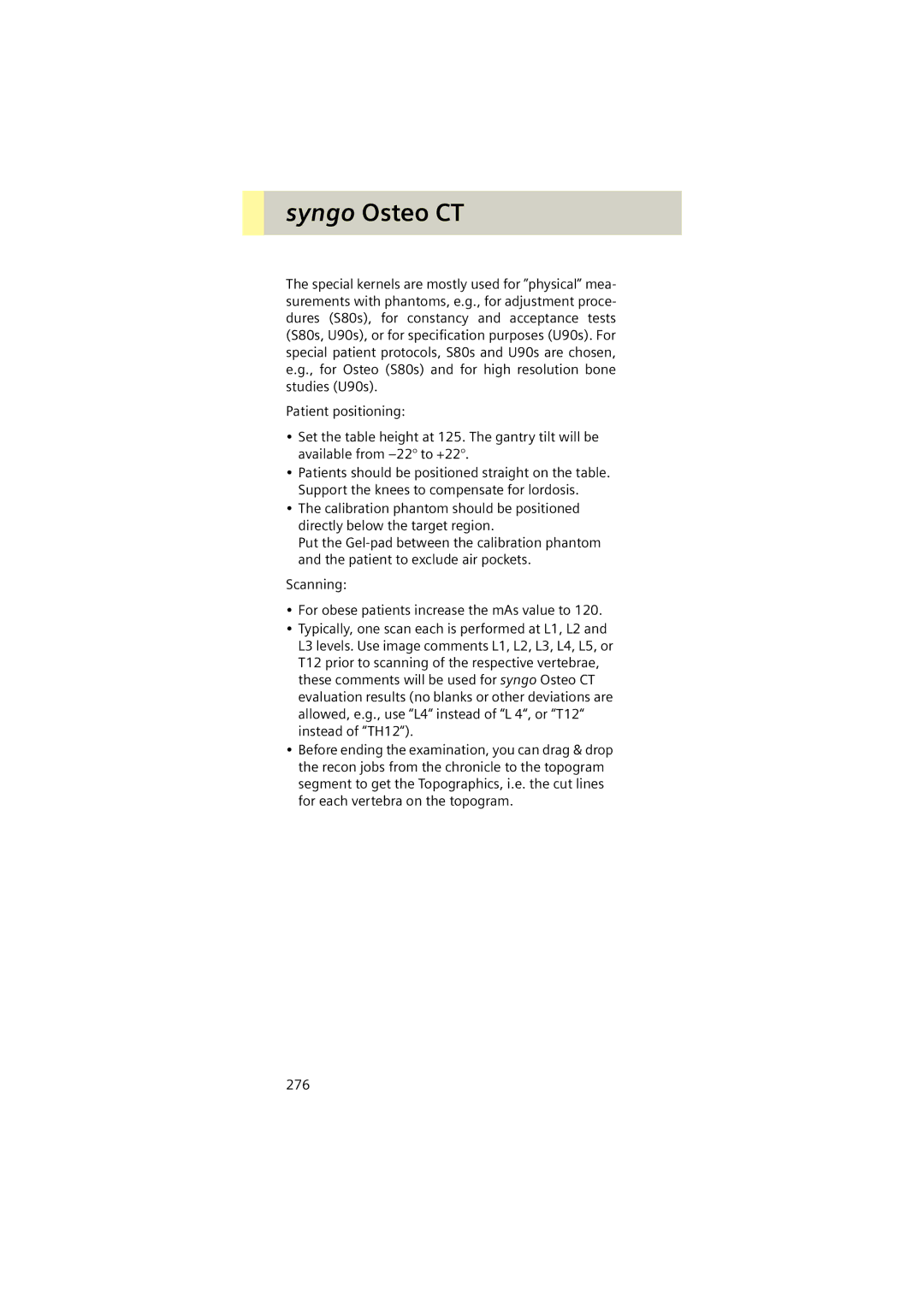syngo Osteo CT
The special kernels are mostly used for ”physical” mea- surements with phantoms, e.g., for adjustment proce- dures (S80s), for constancy and acceptance tests (S80s, U90s), or for specification purposes (U90s). For special patient protocols, S80s and U90s are chosen, e.g., for Osteo (S80s) and for high resolution bone studies (U90s).
Patient positioning:
•Set the table height at 125. The gantry tilt will be available from
•Patients should be positioned straight on the table. Support the knees to compensate for lordosis.
•The calibration phantom should be positioned directly below the target region.
Put the
Scanning:
•For obese patients increase the mAs value to 120.
•Typically, one scan each is performed at L1, L2 and L3 levels. Use image comments L1, L2, L3, L4, L5, or T12 prior to scanning of the respective vertebrae, these comments will be used for syngo Osteo CT evaluation results (no blanks or other deviations are allowed, e.g., use “L4“ instead of “L 4“, or “T12“ instead of “TH12“).
•Before ending the examination, you can drag & drop the recon jobs from the chronicle to the topogram segment to get the Topographics, i.e. the cut lines for each vertebra on the topogram.
276
